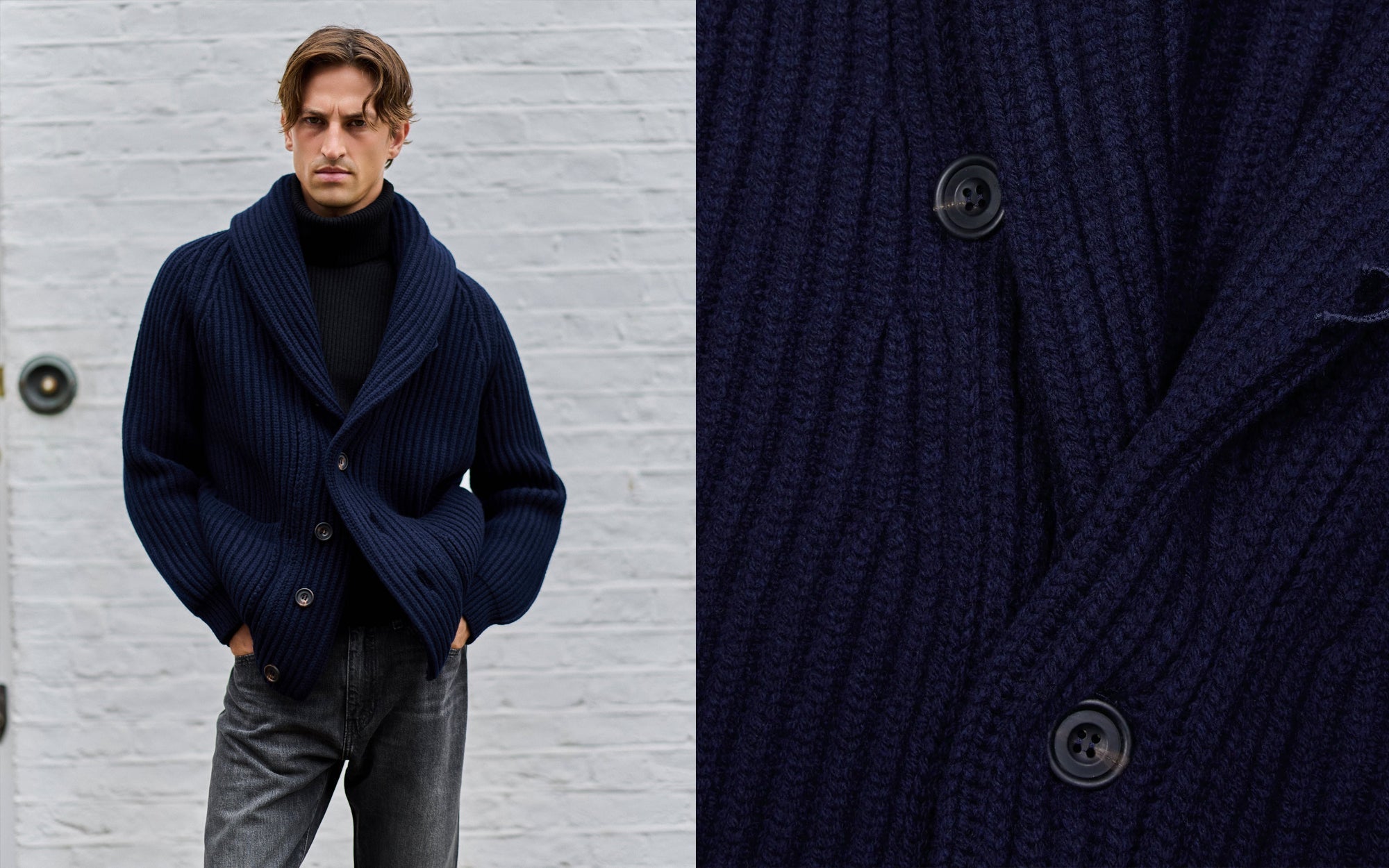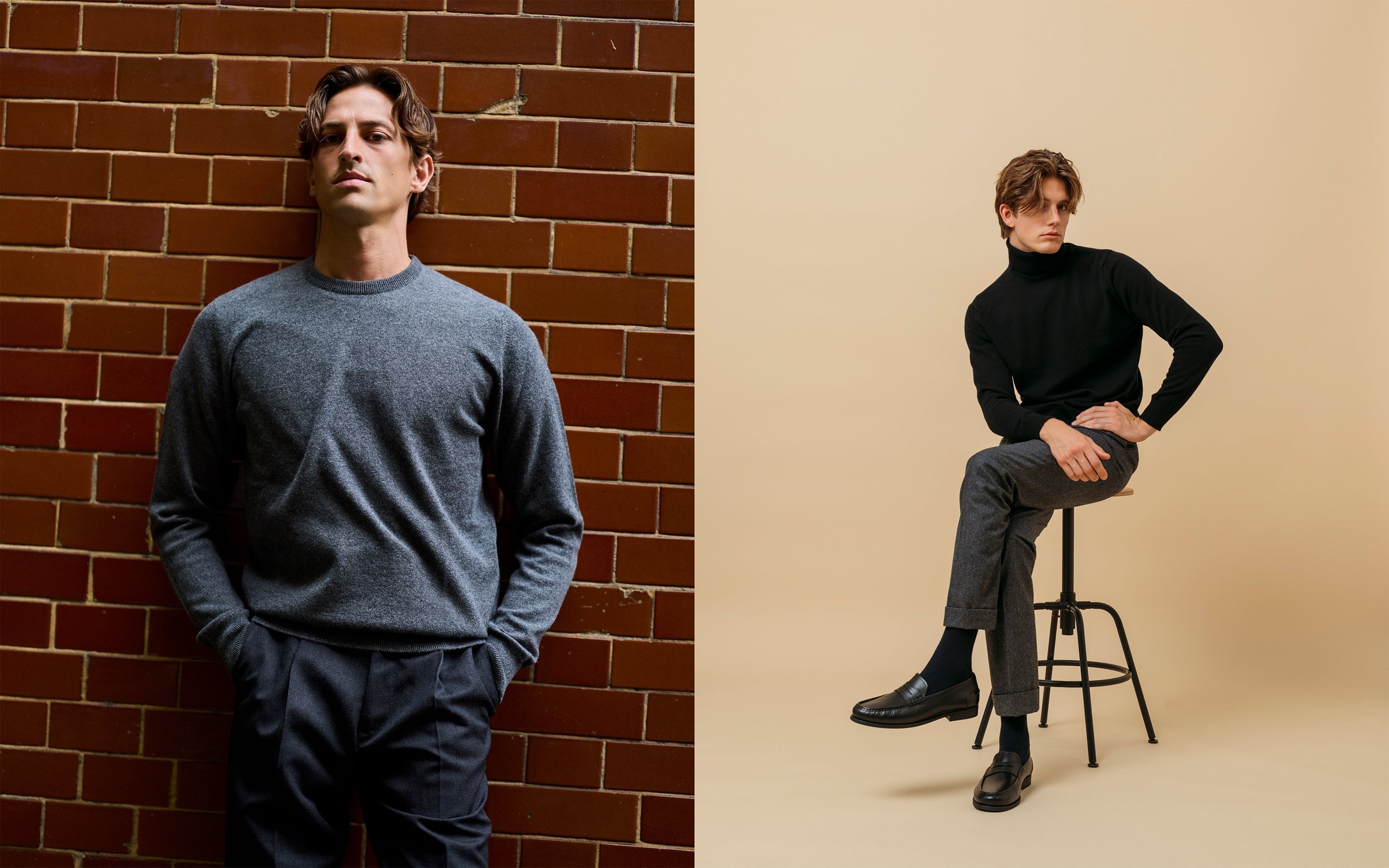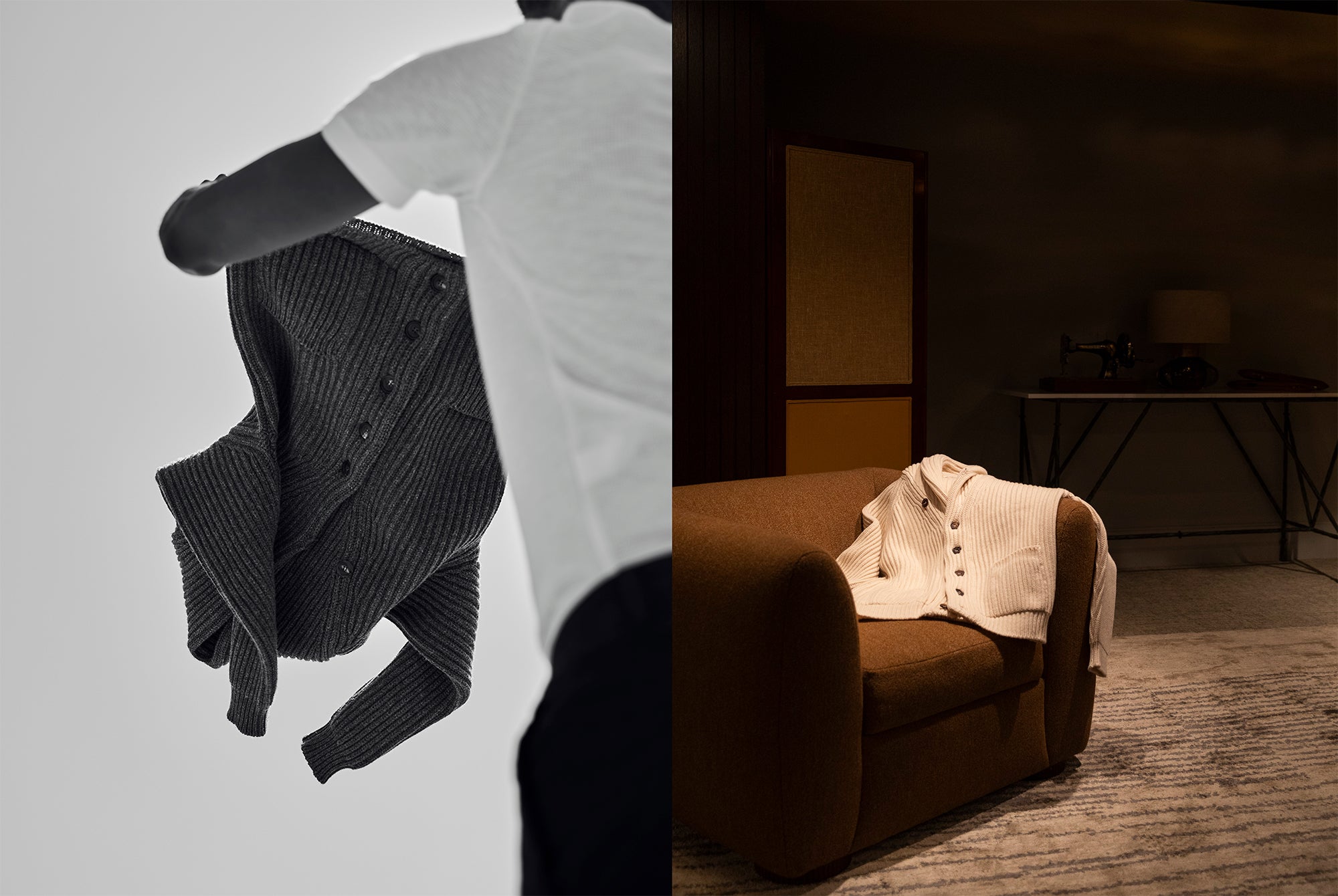
Why Colhay's Knitwear Isn't Itchy
For so many of us the experience of wearing knitwear is marred by memories of itchy, uncomfortable sweaters as children. Thankfully, your knitwear experience as an adult needn’t reflect this. You can reap all the benefits of wearing wool (most notably the cosy, comforting feeling of being wrapped up in something warm but breathable in chilly weather) without feeling irritated and scratchy, you simply need to know what sets high quality knitwear apart from the standard high street woollen garments.
In this article we explain how and why Colhay’s knitwear differs from that on the high street.
High Quality Wool Made from High Quality Fibres
We’ll begin at the very start of the process: the fibres. For wool, these fibres are generally sourced from sheep or lamb and then spun into yarn. A simple explanation of the process is that the fibres are twisted together to create the yarn. There is, of course, far more detail and intricacy to this craft in practice.
The fibres that create the yarn we use here at Colhay’s are the very finest, thus creating a yarn of superior quality. These said fibres come from lambs in South Africa and are both long and fine. (They are also put through a rigorous triple testing process by our suppliers - we’ll go into more detail on them later on in this article.)


Short fibres create knitwear that easily loses shape after wearing, whilst longer fibres translate to strong and long lasting pieces. The finer fibres result in a garment that is less likely to pill and is supremely soft to the touch.
It’s perhaps easiest to understand the differences when the dimensions of the fibres are put into context. The fibres of ordinary lambswool are generally over 25, and very often over 30, microns in diameter. The fibres we use are around 18.5 microns, far thinner than standard.
Transparency and Honesty in Knitwear Production
It’s also noteworthy here that much of the wool we see on the high street is, in actuality, not 100% wool. Very often the natural fibres are blended with synthetic ones, usually with cost saving in mind.
At Colhay’s we believe firmly in transparency and in wanting our customers to fully understand our garments. We take a stance that is fairly unusual in the industry. When buying on the high street there is often not much concrete information about where the wool specifically comes from. We do not take this approach, rather than being ambiguous, we encourage our customers to learn about our processes and are keen to share the details of our production. With our superfine lambswool products, we can even trace the wool back to the farmer who owned the lambs.

For us, quality is our biggest focus and top priority. When we state our products are of superb quality, we are able to back this up with truthful data and the history of each piece, something relatively uncommon for modern brands and something which, we believe, sets us apart from others.
The yarn spinners we use are called Todd and Duncan and, in the world of luxury knitwear, they are renowned for unparalleled knowledge of yarn and the subsequent quality of their them. Established back in 1867, this is a producer that holds itself to the strictest standards, never cutting corners or skipping steps for economic reasons.

Washing the Fibres
As we mentioned previously, the process begins with the sourcing of the fibres and once these fibres arrive in Scotland they are washed in the loch next to Todd and Duncan. The waters of Loch Leven are home to a precise blend of minerals that isn’t found anywhere else on the planet and it’s this water that opens up the fibres and contributes to the famously soft hand feel of the yarn.

Different Types of Wool
As we’ve already covered, when coarser fibres are used, wool can feel scratchy against the skin. This can be avoided by sourcing fibres of the right width and length, but it’s also important to consider the types of wool too.
Generally speaking, when the word wool is used, it refers to yarn made from fibres of sheep over seven months old. By this point the fibres are thicker, thus resulting in a rougher wool. (This wool isn’t without its place, it’s great for things like carpets, blankets or upholstery where something very robust is required!)
The Superfine Lambswool we use is produced from the fibres of lambs that are seven months or under. At this point, the wool is the softest it is ever going to be, thus making it the best to use for knitwear.
A Superfine Lambswool Hero Piece
One of our favourite, and most popular, Superfine Lambswool garments is our Shawl Collar Cardigan. Available in eight muted and sophisticated colourways this is a cardigan that ticks the boxes for style and practicality. It’s a durable cardigan that’s thick and cosy, yet ultimately soft. Don’t just take our word for it, we have many customers report they’re ecstatic with the softness of the cardigan.
The reason behind this comfort and softness is, of course, the lambswool that it’s made from, but also the rib stitch construction. This specific knit consists of an alternating knit and purl structure that generates some elasticity within the fabric, allowing it to gently mould to your body. The undulating surface also creates a sort of bounce and cushioning, again, making the cardigan feel luxurious and soft for the wearer.
Perfect for layering, this is a garment that will see you through autumn and winter, and even into spring. The thick collar can be flipped up or down, depending on personal preference and/or that day’s particular weather. It’s this collar that also makes the piece so flattering - by creating a v shape, the collar elongates the torso and widens the shoulders, a desirable look for many men.
Find the Superfine Lambswool Shawl Collar Cardigan, alongside our other lambswool pieces, here: https://colhays.com/collections/superfine-lambswool.
If you have any questions about the yarns and wool types we use, please don’t hesitate to get in contact with us, our team will be delighted to help.





















